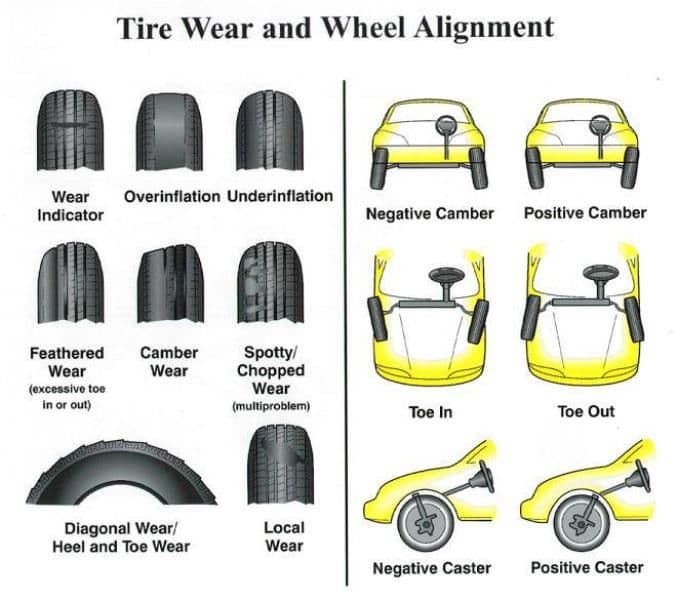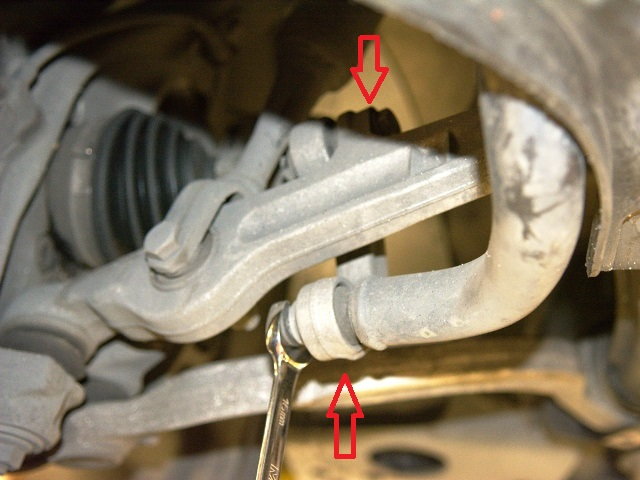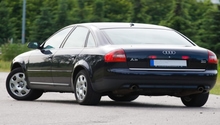Audi A4 B8: Why Is There an Annoying Noise in the Front End?
This article will walk you through the diagnostic process so you can track down the most probable source of front end suspension noise problems and fix them. Some are minor, and some can mean hundreds of dollars in repairs, so let's find out which type yours is.
This article applies to the Audi A4 B8 (2008-2015)
Let's face it, front end noises can be difficult to figure out and fix, especially in something as complex as the Audi A4. Audi engineered the A4 to provide precise handling, in all weather, plus a luxury ride, and that takes a lot of different parts working together. Oftentimes, the noises caused by these components only occurs at specific times, such as turning a corner, hitting a bump, or under hard braking, and of course there is no way to see what is going on under the car while it is moving. The good news is, with a little time and a plan, you can check out all the most common places these noises come from and the components that is causing them.

Materials Needed
- Jack and jack stands
- Pry bar
Step 1 – Check your tires
A misaligned car or unevenly worn tires can lead to noises and other symptoms.
While your car started out with a perfectly aligned and accurate suspension and tires, driving over rough surfaces and potholes, and even the crown of the road can cause uneven wear and misalignment. You might even throw things off quickly by hitting a particularly bad pothole or curb. Generally, you will know when your alignment is off because the car will pull to one side, or your tires will have uneven wear. This uneven wear can cause a droning noise from the front end, especially at highway speeds.
Getting an alignment is a relatively inexpensive job that can save you money in the long run in regards to tire replacement costs and premature suspension wear and tear. Checking the alignment isn't easy to do yourself, but you can look for tread wear patterns on the tires (as shown on the chart) that indicate bad alignment (or shocks). If you have a noise coming from just one corner of the car, try rotating the tires and see if the noise moves, which would indicate a tire with tread separation.

If your tires are good, move on to Step 2.
Step 2 – Check your shocks/struts
Bad shocks and struts can get pretty noisy on uneven surfaces.
Your shocks take a lot of abuse, serving to cushion the bumps and dips in the road and provide booth accurate handling and a smooth ride. When they start to wear out, shocks lose their ability to dampen, letting the bounce like a pogo stick, or bottom out easily; they can also start to make squeaky and/or creaky noises. They are easy to check, however, even when the car isn't in motion. Starting at one corner of the car, push down on the fender directly above the wheel and watch how it reacts. If the car raises back up and doesn't make any noise, your struts are fine. If it bounces several times, or makes noise, they need to be replaced. You can also look for telltale sings of oil leaking out of them, which is a sure sign they are blown.

If your shocks/struts are in good shape, move on to Step 3.
Step 3 – Check your control arm bushings
Worn and damaged bushings lose their ability to quiet things down up front.
Audi uses a complex front suspension with four individual control arms on each wheel, with a ball joint and a rubber bushing, which gives a smoother ride, and quiets the metal on metal noise you'd hear otherwise. It only makes sense that once these rubber bits wear down or become cracked or damaged; they also lose their ability to keep things quiet, and properly aligned for that matter. To check your bushings, jack up the front of the car and use a pry bar to move each suspension bit around and watch how they react. It's pretty easy to spot a damaged bushing, and excessive play is a sign that it needs to be replaced. Most people typically replace all the control arms, bushings and ball joints at once with any of the readily available kits. You can replace them yourself by following this how to article: Audi A4 B7: How to Replace Ball Joints/Control Arms.

If your bushings are in good shape, move on to Step 4.
Step 4 – Check other suspension components
If your noise isn't the result of bad bushings, misalignment, or struts, it's probably a bad part in the suspension.
If you still haven't found any loose components or obvious noise makers, there are a few other places to check. If the control arm bushings seem okay, the ball joint on the other end could still be bad. Tie rod ends connect the steering rack to the wheels, and can exhibit clicking or clunking noises when turning the wheel or when traveling over a bumpy surface; both can cause some play in the steering, vibrations while driving, and an increased turning radius. The easiest way to check tie rod ends and ball joints is to check for steering slack. Jack up the front of the car so the front suspension is free, then grab a wheel with each hand and push in and out on the front tires to check for free play.
While you're under the car, also check the condition of your CV joint boots. While CV joints rarely fail, a damaged or torn boot can leak grease and allow the joint to dry out. Bad CV joints generally make grinding, popping, or clicking noises, particularly while turning.
The front sway bar is connected to the lower control arm with short end links, which also have bushing in them that can fail. This will mostly make noise when you initially enter a corner and the body rolls to one side on the suspension. Don't forget to check the rear suspension as well for loose control arms and end links. The noises aren't usually as noticeable, but will be similar to what you get up front, with similar causes.

Figure 4. Check the CV joint for cracked boots and play. Quattro models have them on all four wheels. 
Figure 5. The end link is a short meat piece with a bushing at each end.
Related Discussions
- Front Suspension Noise - AudiWorld
- Clicking Noise From Front Suspension - AudiWorld
- Clunking Noise Front Suspension - AudiWorld






